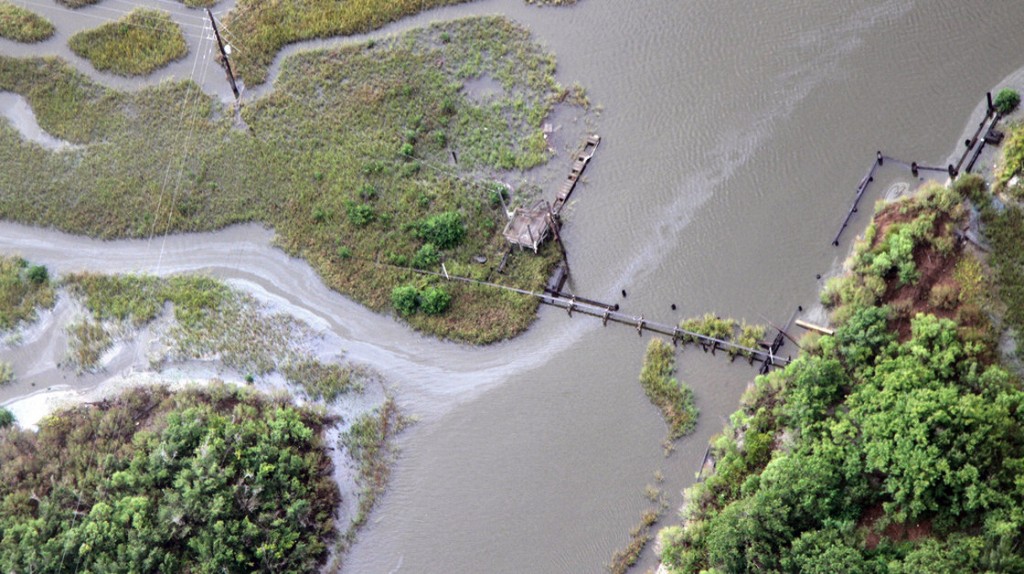great slideshow at:
http://www.al.com/business/index.ssf/2014/04/oil_and_gas_regulators_look_to.html#incart_river_default
Mobile, Alabama
By Michael Finch II | mfinch@al.com
on April 23, 2014 at 6:40 AM, updated April 23, 2014 at 6:49 AM
MOBILE, Alabama — Alabama’s beaches are back in business, finding favor with tourists once again. There is, however, still more work to be done. Stakeholders agree offshore drilling continues to be risky endeavors thousands of miles beneath the Gulf of Mexico.
It took the blowout of the Macondo well, a ruinous gusher that leaked for 87 days, to shed a light on the caustic trade-off for powering cars, televisions and central air conditioners.
Some fear subsea energy exploration, an unforgiving endeavor, still carries on despite a deficit of safety reforms four years after the 2010 Deepwater Horizon oil spill. And regulators of the country’s offshore oil and gas industry are looking into an unlikely way to monitor shortcomings on rigs: allow the companies to report incidents themselves.
The “near-miss” reporting system partially administered by the Bureau of Safety and Environmental Enforcement would have companies voluntarily submit confidential reports that will be aggregated into a snapshot of the industry’s soundness.
Brian Salerno, the agency’s director, said last month that the reporting system “has the potential to help prevent catastrophic incidents that endanger lives and the environment. However the tool is only as good as the information provided.”
The idea mimics a common practice in the aviation industry, allowing a third party, in this case the Bureau of Transportation Statistics, to collect the information. They’re making their pitch to industry this week at meetings in Los Angeles and Houston.
But the well-meaning program is far from what a skeptical public had hoped for.
In the months after Deepwater Horizon, sweeping reform seemed inevitable. The events, which at one point carried so much urgency, have become deflated around action in courtrooms.
When more than 200 million gallons of oil was set free into the Gulf, it exposed more than a few issues. In response, a presidential commission prescribed a number of recommendations to bolster drilling safety.
“If you want to know how far we’ve come since Horizon, use that as your baseline,” said Richard Charter, a senior fellow with the Ocean Foundation. “You look at the check list on the executive summary and not much has changed.”
In deference to the report, the Minerals Management Service was split into two agencies — one for safety and another for development — to eliminate conflicting interests. Today the agencies still confront workforce development challenges, seeking to pull from the same pool of candidates as the moneyed oil industry.
Some of the same technology that failed in 2010, such as the blowout preventer, is still in use today.
“The need to be precautionary is second to none–other than the nuclear industry,” Charter said. “Levels of redundancy have worked in the nuclear industry and in space, but for some reason it has not translated to the oil and gas industry.”
Having been allowed to bid on new leases last month, BP’s operations are crucial to testing the new self-reporting system.
A settlement reached in March with the Environmental Protection Agency requires the British oil giant to take part in the bureau’s “near-miss” program.
The Center for Offshore Safety, an industry-backed organization that was formed after the spill, has led with a similar program of its own.
Charlie Williams, former chief scientist for well engineering at Shell worldwide, runs the outfit based in Houston. They count some of the biggest companies doing business in the Gulf among the members who participate.
“The purpose of all this is all aimed at what can we learn, and determine what some of the best practices are,” Williams said. “The ultimate challenge is having a robust safety culture where everybody is individually responsible.”
They’ve only received the first wave of data in November, he said, and has not been able to use the information yet.
As the country moves toward a so-called “all of the above” energy policy, safety concerns associated with offshore drilling will only persist as the government moves to expand exploration into the Arctic, and possibly the Atlantic coast.
The energy rush has occurred, all while most of the long term effects of the oil spill remain unknown, said Sierra Weaver, a senior attorney with the Southern Environmental Law Center in North Carolina.
“We are extremely concerned about the prospect of drilling off the coast of the Southeast (United States),” Weaver said. “These things tend to be out of sight, out of mind.”
The chances of a government program succeeding, Charter said, depend on motivation.
“The motivation for protecting your corporate image from the visible effects is stronger for airlines than for deepwater drillers,” he said. But when you’re miles out into the Gulf “accidents are generally not visible.”
Special thanks to Richard Charter


